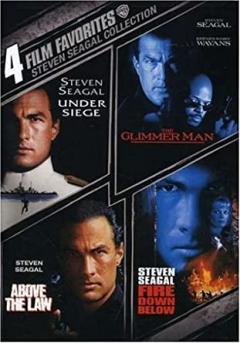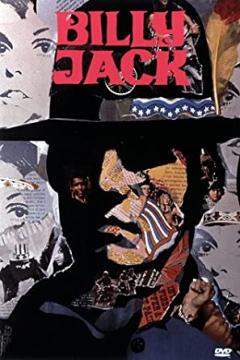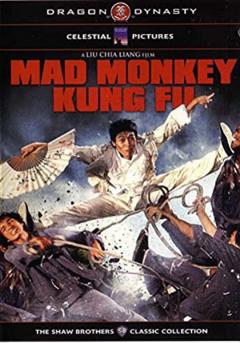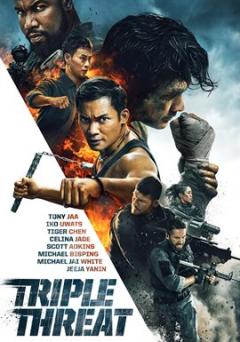Martial Arts Movies kick you know what. Do we need to say more? In addition to the suggested titles on this list, check out our free streaming options on Hoopla and Kanopy.
Steven Seagal plays an aikido specialist in his acting debut. Seagal holds a 7th dan black belt in aikido and was said to be the first foreigner to operate a dojo in Japan (owned by his then wife's father). He later taught aikido in Los Angeles to Hollywood superagent Michael Ovitz prior to his being cast here.
Writer/Director/Lead Actor Tom Laughlin trained for six months with hapkido Grandmaster Han Bong-soo before filming this American counterculture cult hit.
While star Yanin 'Jeeja' Vismitananda is a 4th dan taekwondo black belt, she also displays proficiency in muay thai and capoeira. Here she plays the autistic daughter of a Japanese Yakuza and a Thai mafia hit woman who uses her hyperfocused martial arts training to collect debts owed to her family to pay for her mother's chemotherapy. From the director of the Ong Bak, both of which are currently on Hoopla.
This wuxia film was a rare mainstream awards winner for martial arts films (it won 3 of 10 Academy Awards it was nominated for in 2001). It is an example of what is sometimes referred to as 'wire-fu'. While some of the lead actors did not have a background in martial arts, Michelle Yeoh had previously worked as a choreographer and stunt performer (coming from a background in ballet since age 4). Zhang Ziyi also attended the Beijing Dance Academy from a young age.
This Taiwanese wuxia film set box‐office records in Taiwan, Korea, and the Philippines. Lead actress Shang-Kuan Ling Feng earned 2nd dan belts in both karate and taekwondo (teaching the former in the U.S. after retiring from movies). Both Chun Shih and Hsu Feng would appear another of Director King Hu's masterpieces A Touch of Zen a few years later.
Mainly shot on location in Hong Kong, this contains Bruce Lee's final film performance and is widely considered to have contributed to an increased mainstream interest in martial arts worldwide. While Lee primarily trained in Wing Chun, he developed his own style that he referred to as Jeet Kune Do. Lee would die from side-effects of a drug allergy a month before the film's release. Supporting actor John Saxon was a black belt in judo and Shotokan karate and Jim Kelly had his own training dojo in Los Angeles at the time of filming.
Shaw Brothers' classic, directed by masterful martial arts director Chang Cheh. This is his first of many starring a group of actors and self-choreographers, known as The Venom Mob, that were all friends since attending Peking Opera School together. This is a good example of a film that has its fighters embody a variation on the Shaolin 'animal styles'.
A Chinese wuxia film set during the Warring States period. Actors Jet Li and Donnie Yen are both former Wushu champions. The film has a strikingly changing visual pallette and, as Roger Ebert wrote, "demonstrates how the martial arts genre transcends action and violence and moves into poetry, ballet and philosophy". This was the first Chinese-language film to open #1 at the American box office.
This biography of Ip Kai-man, a grandmaster of the martial art Wing Chun and teacher of Bruce Lee, stars mixed-martial artist Donnie Yen with choreography by Hong Kong New Wave star Sammo Hung. Yen studied with Ip Man's eldest son for 9 months before filming. See also the later bio: The Grandmaster.
This American film helped to popularize karate in the U.S., especially for parents and children, in the 1980s. Writer Robert Mark Kamen drew upon his own teenage years where he studied Gōjū-ryū karate, with a Japanese-speaking teacher who was a student of Chōjun Miyagi, to defend himself after being physically bullied. Actor Pat Morita, who was nominated for the Best Supporting Actor Oscar for this film, spent a lot of time observing karate master Fumio Demura (who also doubled for him in the film).
After the breakout martial arts comedy success of Shaolin Soccer, Stephen Chow made this international hit with a cast of great performers. Master choreographers Sammo Hung and Woo-Ping Yuen directed some of the more intense fight sequences. Chow credits Bruce Lee as inspiring him to study Wing Chun as a youth.
This Shaw Brothers classic features some training scenes of so-called monkey boxing. Director/Star Lau Kar-leung was a one of the Shaws' best choreographers, especially for director Chang Cheh's wuxia films, and a student of Shaolin style Hung Gar.
One of the first Hong Kong-Hollywood martial arts crossover films, this was Corey Yuen's American directorial debut, featuring an early role for Jean Claude van Damme as the Soviet villain (who would break out a couple of years later with Bloodsport). Van Damme notoriously, repeatedly made unintended physical contact on actors with his kicks; He previously trained in Shōtōkan karate and competed professionally on the Belgian Karate Team and in WAKO Kickboxing. The American lead Kurt McKinney held a black belt in taekwondo. Check out some other Van Damme movies on Hoopla.
Chuck Norris uses marital arts to defeat a group of terrorists trained in the ninja style of his Japanese half-brother. Norris trained in Tang Soo Do, while in the military in Korea, and expanded to various other styles that he combined into his own Chuk Kun Do. Richard Norton, playing the villain Kyo, was trained in the goju-ryu style of karate and obtained a 9th degree in Australian Zen Do Kai.
Jackie Chan is well-known for his kind of slapstick acrobatic fighting technique that he developed over a decade at Peking Opera School. Chan has done most of his own stunts throughout his career and has been notably, frequently injured when attempting them (they are often shown as outtakes during the closing credits of his films). Police Story, which he reportedly considers one of his best, is a bit less light-hearted than his previous films and contains an extended martial arts sequence during its closing mall scene (also with one of his most impressive stunts). There are quite a few more to choose from on Hoopla.
This one has a simple premise; an Indonesian SWAT Team is trapped in a high-rise tenement, scaling floor by floor, plowing through a mobster's army, to get to the top. There's a lot of gun-play, but also plenty of martial arts action lead by amazing Iko Uwais, who has trained in silat, capoeria, and gymnastics. It also features fight choreographer Yayan Ruhian who professionally teaches Pencak silat (both were briefly seen in Star Wars: The Force Awakens, along with silat trainer Cecep Arif Rahman, just because of how awesome they are).
See also the sequel: The Raid 2
A who's who of not-quite-yet-superstar action actors. This has a combination of silat, kung fu, and muay thai on display here. And lots of guns (of course). The filmmaking may not be the best, but there's too much talent to list them all in links here. See the cast list in the Hoopla link above for more choices.




